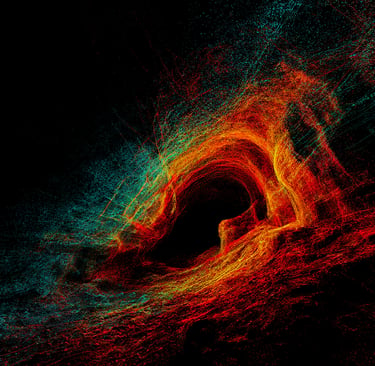Beneath the Surface:
What Lava Tubes on the Moon and Mars Mean for Exploration and Human Settlement
11/18/20253 min read


For decades, planetary scientists have stared at the pitted surfaces of the Moon and Mars and wondered what might lie below. The answer has been slowly emerging through high-resolution orbital imaging and sophisticated comparative planetology—and the picture is extraordinary.
A landmark paper by Sauro et al. (2020), Lava Tubes on Earth, Moon and Mars: A Review on Their Size and Morphology Revealed by Comparative Planetology has reshaped our understanding of these hidden worlds. By comparing terrestrial lava tubes with collapse chains and skylights observed on Mars and the Moon, the authors reveal something astonishing: subsurface caves on other worlds dwarf anything found on Earth, both in size and scientific importance.
For a new generation of space architects, mission designers, and exploration platforms—including Plan r, which focuses on using subterranean spaces for off-world habitability—these findings aren’t academic. They define the next frontier.
Why Lava Tubes Matter
On Earth, lava tubes form when flowing lava crusts over or inflates beneath its own hardened surface, creating stable caverns that can run for tens of kilometers. These caves—from Hawai‘i’s Kazumura system to the enormous Corona tube in Lanzarote—serve as valuable analogs for understanding their extraterrestrial counterparts.
But Mars and the Moon, with their lower gravity and thicker volcanic deposits, take the concept of lava tubes to a completely different scale.
Sauro et al. (2020) show that:
Martian lava tubes may span hundreds of meters in width, with deep-inflation processes creating stable, complex networks.
Lunar lava tubes could reach 700–900 meters across and more than 100 meters tall, forming cathedral-scale voids beneath the maria plains.
These subsurface systems are orders of magnitude larger than anything on Earth.
This is precisely why Plan r—a design and research initiative aimed at leveraging natural geological voids for extraterrestrial architecture—places lava tubes at the center of its long-term strategy. The potential is simply unmatched.
Science in the Subsurface
Beyond their physical scale, extraterrestrial lava tubes offer unparalleled scientific opportunities.
On Mars
Natural shielding from radiation and dust
Potential preservation of ancient ice
Chemically stable environments that could retain biosignatures
Steady temperatures ideal for robotics and instrumentation
These are prime targets for astrobiology—and exactly the kind of locations where Plan r’s exploration concepts envision deploying autonomous mapping and habitat-precursor systems.
On the Moon
Access to ancient volcanic layers, untouched for billions of years
Entrenched, mega-scale tubes with roofs stable even under seismic loads
Unique sampling opportunities through skylights
For lunar settlement, Plan r integrates these findings into habitat concepts that use tubes as pre-existing “infrastructure cavities,” reducing the mass required for surface shielding.
Habitats of the Future
Lava tubes on the Moon and Mars offer a natural answer to some of the most difficult engineering problems in space architecture:
Radiation protection equivalent to tens of meters of regolith
Thermal stability without extreme surface temperature swings
Protection from impacts and micrometeorites
Massive internal volumes suitable for agriculture, laboratories, storage, or entire outposts
Plan r builds on this by developing frameworks for site selection, environmental characterization, and design typologies specifically for subsurface habitats—treating lava tubes as the anchor points of future off-world cities, not curiosities.
A Call for Subsurface Missions
Despite years of speculation, no mission has yet entered a lava tube on Mars or the Moon. The Sauro et al. (2020) review makes the situation crystal clear: these are not marginal features—they are major planetary systems essential to understanding geology, habitability, and viable long-term settlement.
The next generation of missions must prioritize:
Lunar skylight descent probes
Martian autonomous cave rovers
Subsurface mapping drones using SLAM and LiDAR
Skylight-focused sample-return missions
Access-lowering technologies tailored to vertical pit morphology
Plan r aligns directly with this push, advocating for exploration-first strategies that treat caves not as exotic destinations but as the primary real estate for future bases.
Conclusion: The Future Is Inside the Rock
Extraterrestrial lava tubes are among the most promising environments in the Solar System—scientifically rich, structurally stable, naturally protected, and astonishingly spacious. The work of Sauro et al. (2020) provides the strongest evidence yet that the Moon and Mars host mega-caverns capable of sheltering both robotic explorers and, one day, entire human outposts.
If we are serious about establishing permanent footholds beyond Earth, exploration strategies must shift from surface-first to subsurface-first.
Lava tubes are not just geological features—they’re the foundation of future off-world habitation, and Plan r is building its vision squarely around them.
The caves are waiting.
Now it’s time to go inside.